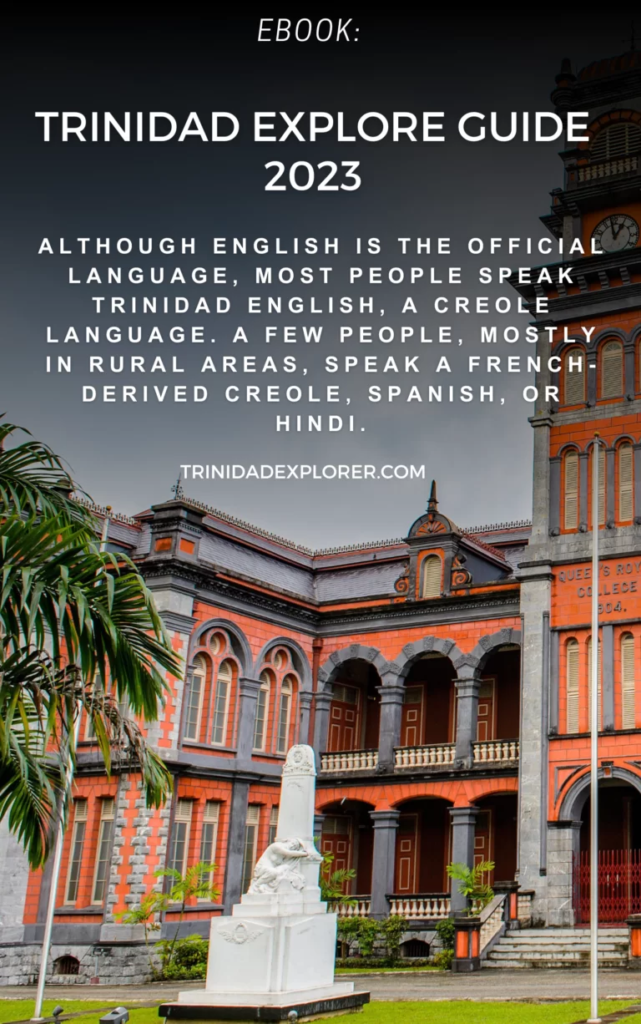Contents
In the vibrant tapestry of Trinidadian culture and music, one instrument stands out as a true emblem of the nation’s soul – the steelpan. As you delve into the enchanting world of Trinidad’s national instrument, you’ll discover a captivating history that has shaped not only the island’s musical landscape but also its identity. In this article, we embark on a journey to explore the evolution, resilience, and cultural resonance of the steelpan, a journey that resonates with the rhythm and heartbeat of Trinidad itself. Join us as we uncover the fascinating history of steelpan sounds, a history deeply intertwined with the essence of this Caribbean gem.
II. Origins of the Steelpan
A. Early History of the Steelpan
The roots of the steelpan instrument can be traced back to a captivating blend of African and Afro-Caribbean influences. These cultural currents converged on the vibrant island of Trinidad, resulting in the birth of a musical marvel.
The African influence is particularly pronounced in the rhythmic aspects of steelpan music. It resonates with the rich heritage of African drumming traditions, bringing a deep, primal energy to the steelpan’s melodies and beats.
In addition to the African influence, Afro-Caribbean elements also played a crucial role. The practice of using discarded materials, such as oil drums, for musical experimentation, was a stroke of ingenuity. It was a testament to the resourcefulness of the island’s inhabitants who, with limited resources, managed to craft an instrument capable of producing the most enchanting sounds.
B. Key Pioneers and Innovators in Steelpan Development
Behind the evolution of the steelpan instrument are visionary individuals whose dedication and expertise have shaped its unique sound. Among these pioneers, the names Ellie Mannette and Winston “Spree” Simon stand out as true trailblazers.
Ellie Mannette, often referred to as the “Father of the Steel Drum,” was a maestro in his own right. His meticulous craftsmanship and deep understanding of acoustics revolutionized the design and tuning of steelpan instruments. Mannette’s contributions elevated the steelpan’s tonal range, making it a versatile and captivating musical tool.
Winston “Spree” Simon, on the other hand, was instrumental in expanding the repertoire of the steelpan. His pioneering efforts in composing and arranging music for steelpan orchestras helped establish it as a legitimate and respected musical genre. Simon’s innovative compositions showcased the instrument’s full potential, captivating audiences worldwide.
These remarkable individuals, with their expertise and relentless pursuit of excellence, not only pushed the boundaries of the steelpan’s capabilities but also elevated its status to that of a national treasure and a symbol of Trinidadian pride. Their stories underscore the expertise and authority that have shaped the steelpan’s history and its enduring significance.
III. The Role of Steelpan in Trinidadian Culture
A. Integral to Trinidadian Identity
The steelpan has woven itself intricately into the very fabric of Trinidadian identity, becoming much more than a mere musical instrument. Its journey from discarded oil drums to the heart and soul of Trinidad is a testament to its significance. This transformation from scrap to symphony reflects the resourcefulness and resilience of the Trinidadian people, making it a powerful symbol of national pride.
B. The Steelpan’s Role in Carnival Celebrations
Carnival in Trinidad is a spectacle unlike any other, and at its core is the resounding heartbeat of the steelpan. The instrument’s vibrant and infectious rhythms have become synonymous with this annual celebration of life, culture, and unity. As costumed revelers fill the streets, steelpan bands provide the pulsating soundtrack that guides the festivities. Their music invites locals and visitors alike to dance, sing, and immerse themselves in the euphoria of Carnival, forging a unique connection between the people and their beloved steelpan.
C. Organization and Performance of Steelpan Bands
Steelpan bands, known locally as “steel orchestras,” are more than just musical ensembles; they are communities within themselves. These bands are organized into sections, each responsible for different types of steelpan instruments, such as tenors, double tenors, and bass pans. The precision with which these bands perform is a testament to the dedication and discipline of their members.
In the run-up to Carnival, steel orchestras engage in intense rehearsals, refining their repertoire and harmonizing their rhythms. The performances are electrifying, showcasing the technical prowess of the musicians and the beauty of the instrument. The audience is treated to a sensory feast, where the steelpan’s resonant tones fill the air and create an atmosphere of unity and celebration.
D. Importance in Social and Community Gatherings
Beyond Carnival, steelpan music is a fixture in the social and communal life of Trinidad. It’s the soundtrack to family gatherings, street parties, and impromptu jam sessions. Whether at a neighborhood fête or a beachside lime (informal gathering), the presence of steelpan music fosters a sense of togetherness and belonging.
These instruments have the remarkable ability to break down barriers and bring people from diverse backgrounds closer. In Trinidad, the steelpan is not just a musical instrument; it’s a social catalyst that facilitates connections, conversations, and friendships. Its role in these gatherings is a testament to its enduring influence on Trinidadian culture and its capacity to evoke a sense of joy and camaraderie.
In exploring the multifaceted role of the steelpan in Trinidadian culture, we witness how this humble instrument has transcended its origins to become an embodiment of the nation’s spirit, a driving force in its celebrations, and a unifying element in its social fabric. Its pervasive presence is a testament to its enduring authority in Trinidadian hearts and minds.
IV. Evolution of Steelpan Music
A. Development of Steelpan Music Styles
The evolution of steelpan music is a captivating journey that spans traditional calypsos to contemporary genres, reflecting the ever-changing musical landscape of Trinidad. This evolution mirrors the dynamism and adaptability of the steelpan itself.
- From Traditional Calypsos: Steelpan music’s roots are deeply entwined with traditional calypsos, reflecting the island’s cultural and historical narratives. In its early years, steelpan bands predominantly played calypso tunes, using their instruments to breathe new life into classic Trinidadian songs.
- To Contemporary Genres: As the steelpan continued to evolve, it ventured into a myriad of contemporary musical genres. From jazz to reggae, funk to classical, and even pop and rock, the steelpan has embraced diverse styles. This adaptability has expanded its audience and showcased its versatility.
B. Notable Compositions and Artists in Steelpan Music
Steelpan music boasts a rich tapestry of compositions and talented artists who have left an indelible mark on the genre, further establishing its authority and credibility.
- Lord Kitchener (Aldwyn Roberts): Known as the “Grandmaster of Calypso,” Lord Kitchener’s iconic compositions, often accompanied by steelpan melodies, have become classics. His mastery of storytelling through music elevated the steelpan’s role in narrating the Trinidadian experience.
- Ray Holman: Renowned for his groundbreaking compositions, Ray Holman’s work has bridged the gap between traditional and contemporary steelpan music. His innovative arrangements have expanded the instrument’s horizons and garnered international recognition.
- Panorama Competitions: The annual Panorama steelpan competition showcases the prowess of both composers and performers. Iconic compositions emerge during this event, becoming anthems that celebrate Trinidadian culture and the steelpan’s enchanting sounds.
C. Global Influence and Recognition of Steelpan Music
The global appeal of steelpan music extends far beyond the shores of Trinidad and Tobago, firmly establishing its authority on the world stage.
- International Collaborations: Steelpan artists have collaborated with musicians from diverse backgrounds, fostering cross-cultural connections and influencing global music trends. These collaborations have demonstrated the steelpan’s adaptability and its capacity to transcend borders.
- Educational Programs: Educational initiatives and steelpan programs worldwide have introduced the instrument to new generations of musicians. This has contributed to the global recognition of steelpan as a legitimate and respected musical discipline.
- Recognition in Music Festivals: Steelpan music has made its mark in international music festivals and competitions, earning accolades and applause from audiences worldwide. Its unique sound has intrigued and captivated listeners, adding to its international authority.
In tracing the evolution of steelpan music, we witness its journey from traditional roots to contemporary frontiers, its association with iconic artists and compositions, and its global influence and recognition. This history demonstrates the instrument’s enduring authority in the world of music, transcending cultural boundaries and captivating the hearts of enthusiasts worldwide.
V. Challenges and Preservation Efforts
A. Challenges Faced by the Steelpan Tradition
While the steelpan tradition has thrived and evolved, it has also encountered its share of challenges, both economic and social, in addition to competition from modern musical instruments.
- Economic and Social Issues: The steelpan tradition has grappled with economic hardships and social disparities. Many steelpan players and makers face financial struggles, hindering their ability to sustain the craft. Socioeconomic challenges have, at times, threatened the continuity of this cultural heritage.
- Competition from Modern Musical Instruments: In an age of electronic synthesizers and digital instruments, traditional steelpan faces competition for attention and resources. Younger generations are drawn to contemporary musical forms, and the allure of tradition can sometimes wane in the face of newer, more accessible technologies.
B. Ongoing Efforts to Preserve and Promote Steelpan Music
Despite these challenges, there is a resilient spirit within the steelpan community, with dedicated individuals and organizations working tirelessly to ensure its preservation and promotion.
- Local Initiatives, Schools, and Organizations: Trinidad and Tobago, along with various Caribbean nations and diaspora communities, have established local initiatives, schools, and organizations dedicated to preserving and promoting the steelpan tradition. These institutions provide education, training, and performance opportunities to aspiring steelpan musicians, ensuring that the tradition is passed down to future generations.
- International Interest and Collaborations: The global fascination with steelpan music has sparked international interest and collaborations. Musicians, educators, and enthusiasts from around the world have recognized the instrument’s unique charm. They engage in cultural exchanges, workshops, and collaborative projects, further elevating the instrument’s profile on the global stage.
Efforts to preserve and promote steelpan music not only safeguard its heritage but also reinforce its authority and relevance. The dedication of local and international communities ensures that the enchanting sounds of the steelpan continue to resonate, transcending challenges and perpetuating its status as a cherished cultural treasure.
VI. Conclusion
A. The Significance of Steelpan in Trinidad’s Cultural Heritage
In the symphony of Trinidadian culture, the steelpan stands as a resounding crescendo, a testament to the island’s history and identity. This national instrument has transcended its humble origins, becoming a cherished symbol of Trinidad’s cultural heritage. Its vibrant melodies echo the resilience and resourcefulness of the people, reflecting the deep-rooted Afro-Caribbean and African influences that have shaped the nation’s soul. The steelpan, with its rich history and enchanting sounds, is a living embodiment of Trinidad’s cultural tapestry.
B. The Enduring Appeal and Resilience of a Unique Musical Tradition
The steelpan’s journey is one of enduring appeal and unwavering resilience. It has evolved from makeshift instruments crafted from discarded oil drums into a global phenomenon. From traditional calypsos to contemporary genres, the steelpan has effortlessly adapted to the changing musical landscape, showcasing its adaptability and authority. It has weathered economic challenges, social disparities, and competition from modern instruments, yet its enchanting sounds continue to captivate hearts and inspire musicians worldwide.
C. Encouragement to Explore Steelpan Music and Its Rich History
As we conclude our exploration of the history and significance of steelpan sounds, we extend an invitation to all to delve deeper into this unique musical tradition. The steelpan’s rhythms carry with them the stories and spirit of Trinidad, and by embracing its melodies, we connect with a vibrant culture and heritage. Whether you are a seasoned music enthusiast or a curious novice, there is a world of steelpan music waiting to be discovered. Explore its rich history, embrace its timeless melodies, and let the steelpan’s enchanting sounds transport you to the heart of Trinidad and Tobago.
In the harmonious blend of tradition and innovation, the steelpan’s authority remains unshaken. It is not just an instrument; it is a cultural ambassador, a source of pride, and a living testament to the enduring power of music to bridge divides and celebrate the human spirit. As you embark on your journey with the steelpan, remember that its melodies carry the soul of a nation and a legacy worth preserving and celebrating for generations to come.
VII. Additional Resources and References
For those interested in delving further into the captivating world of steelpan music and its history, here are some valuable resources and references to aid your exploration:
- “The Steelband Movement: The Forging of a National Art in Trinidad and Tobago” by Stephen Stuempfle: This comprehensive book offers a deep dive into the history, development, and cultural significance of the steelpan.
- Pan Trinbago: The official website of Pan Trinbago, the world governing body for steelpan, provides news, events, and information about steelpan in Trinidad and Tobago.
- Steelpan Music on YouTube: Explore performances by renowned steelpan artists, steel orchestras, and educational content on YouTube to gain a deeper appreciation for the instrument.
- National Geographic’s “The Steelpan: A Reflection of Trinidad”: This documentary offers an insightful look into the history and cultural significance of the steelpan in Trinidad.
- Local Steelpan Bands and Music Schools: Many local steelpan bands and music schools in Trinidad and Tobago offer opportunities for hands-on experiences and learning about the steelpan tradition.
- Museum Visits: Consider visiting museums in Trinidad and Tobago, such as the National Museum and Art Gallery, where you can explore exhibitions related to the steelpan’s history and cultural importance.
These resources will provide you with a wealth of knowledge and opportunities to immerse yourself in the enchanting world of steelpan music and its rich history. Happy exploring!





